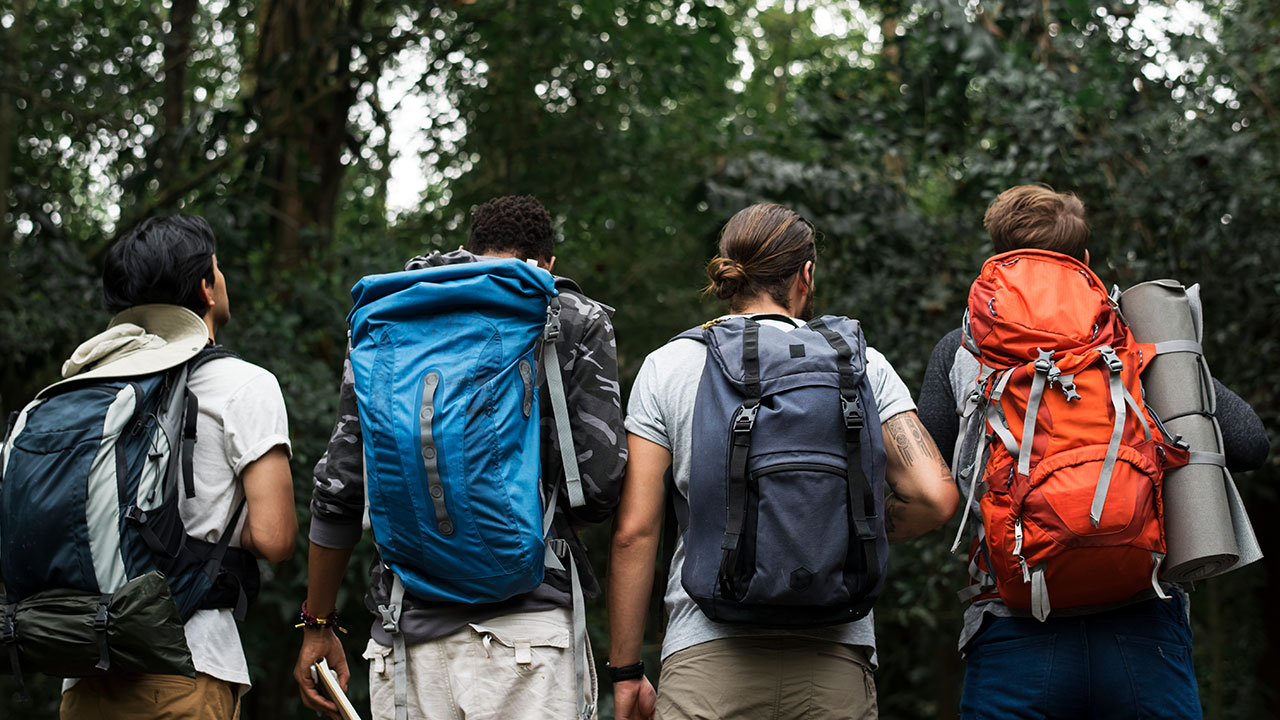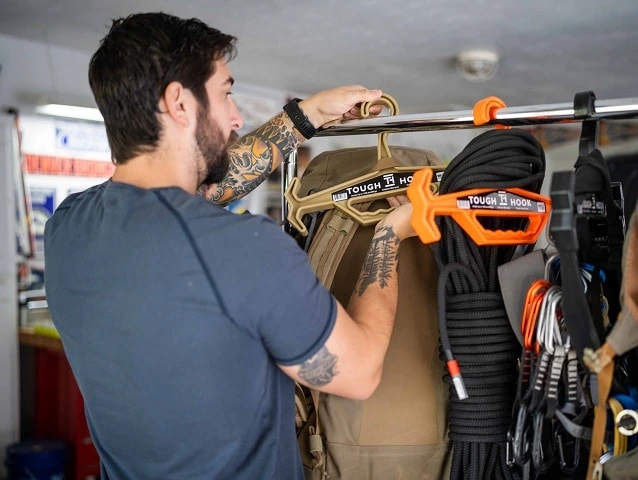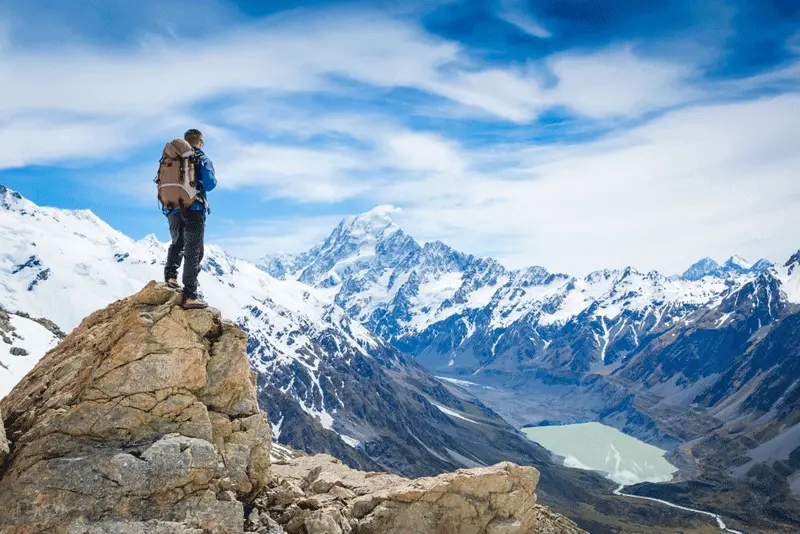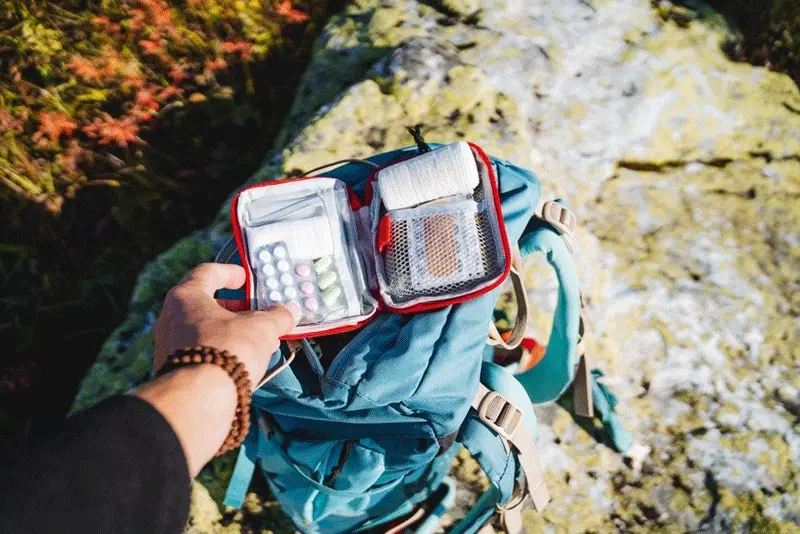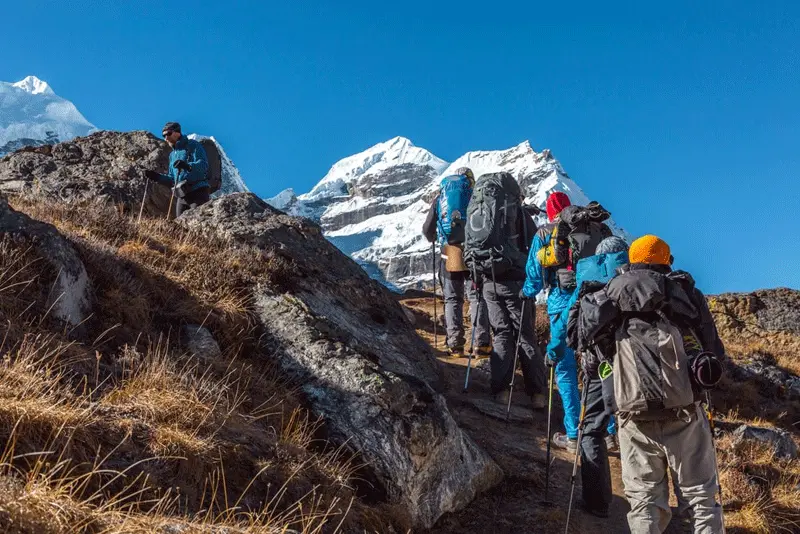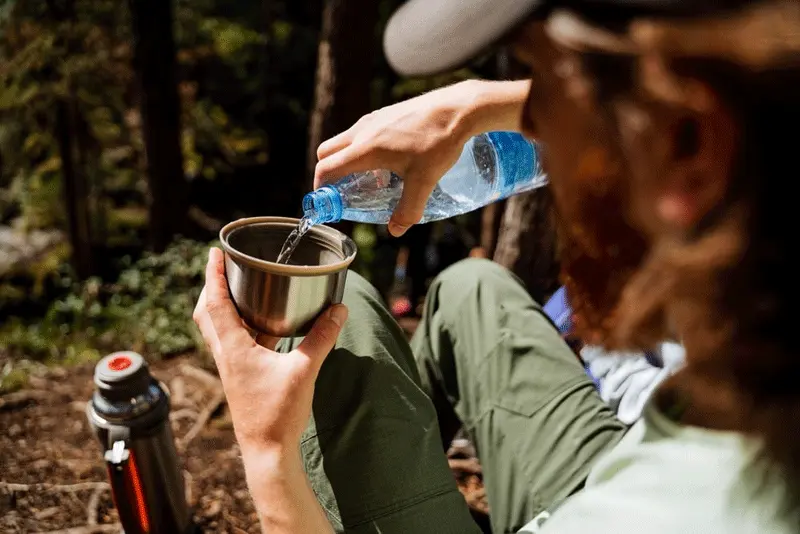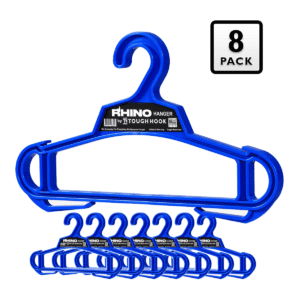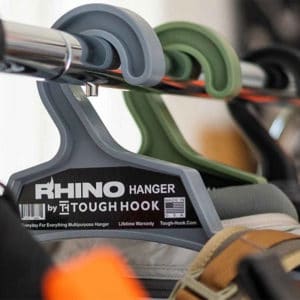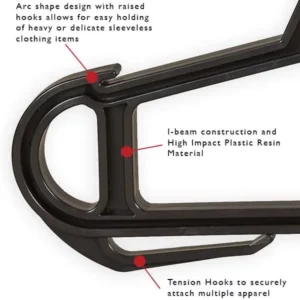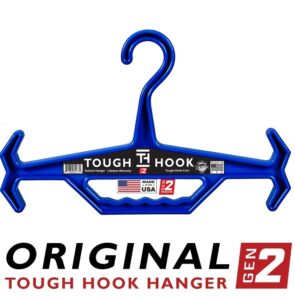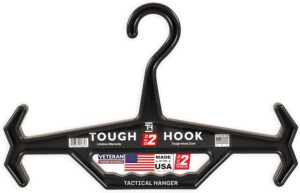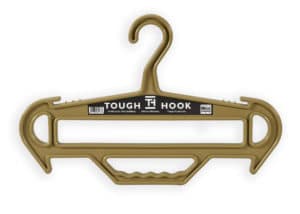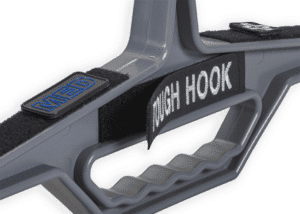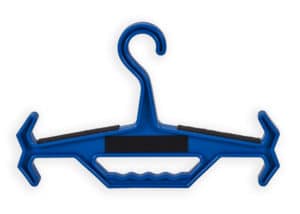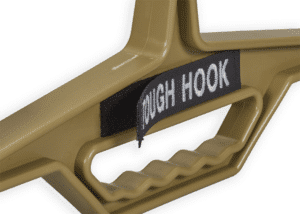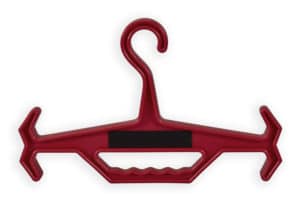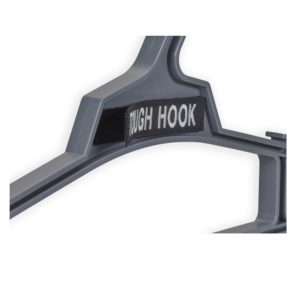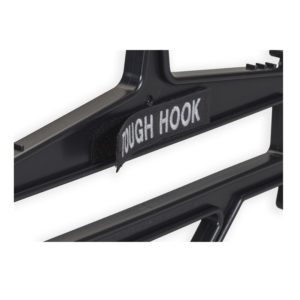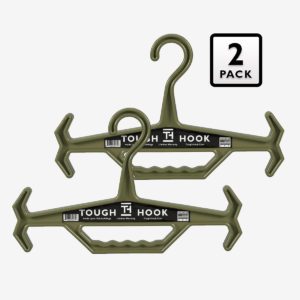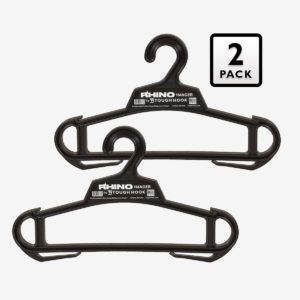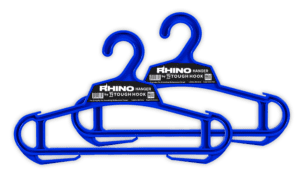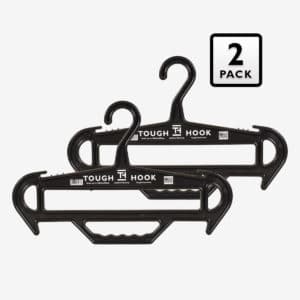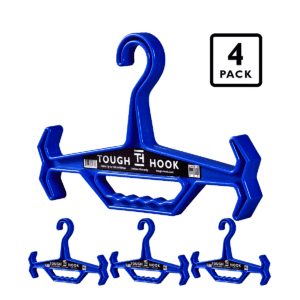Scaling the towering heights of mountains is an adrenaline-filled adventure, but nothing short of proper preparation can ensure your safety in this unpredictable wilderness. One undeniably crucial component of this preparation is quality survival gear – designed to be your lifeline amid the most challenging terrains nature has to offer. Find out why our USA-made heavy-duty hangers are not just a fancy addition, but a must-have item in your mountain climbing arsenal. Join us as we delve into the importance of having robust, reliable equipment at hand and unveil the must-pack items that could make or break your monumental climb.
Some examples of essential survival gear for mountain climbing include water, high-quality harnesses and wind-resistant butane lighter, all-weather fire cubes, 550 cord, climbing leash, hypothermia prevention kit, foldable knife, MSR Micro Inline filter, strobe or signal panel, and a first-aid kit. Other important items to bring include fresh batteries, a headlamp, multitool, proper clothing (including sun protective clothing and extra layers), and navigation and communication devices like GPS or satellite communicators. It is crucial to assess weather and terrain before packing and to make a plan and itinerary that is shared with friends or family in case of emergency.
Essential Survival Gear for Mountain Climbing
When it comes to mountain climbing, being properly equipped with the right survival gear can mean the difference between life and death. The rugged and unforgiving terrain poses numerous challenges, from unpredictable weather conditions to potential emergencies. Here are some essential items that every mountain climber should have in their gear arsenal.
A reliable water/wind resistant butane lighter is a must-have for starting fires in adverse conditions, providing warmth and the ability to cook food. Paired with all-weather fire cubes, these tools ensure you can create a fire even in wet or windy environments. Additionally, having 550 cord (also known as paracord) is invaluable for various purposes such as building shelter or creating makeshift harnesses.
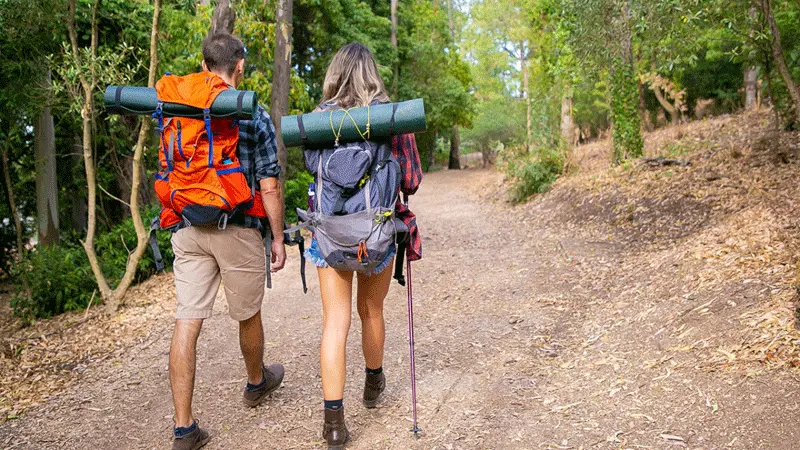
Imagine being caught in unexpected freezing temperatures during your mountain climb. A hypothermia prevention kit – including emergency blankets, hand warmers, and waterproof matches – could make the crucial difference between survival and dire circumstances.
In treacherous terrains, accidents can happen unexpectedly. That’s where a climbing leash comes in handy. This indispensable tool keeps you securely attached to your gear and ensures that a momentary slip doesn’t turn into a disastrous fall.
Another critical item to include in your survival gear is a foldable knife. This versatile tool serves multiple purposes like cutting rope, preparing food, and assisting in medical emergencies. Opting for one with additional features such as a saw or bottle opener can prove beneficial.
To stay hydrated safely while climbing, consider carrying an MSR Micro Inline filter. Not only does this filter remove impurities from water sources found on the mountain, but it also safeguards against harmful pathogens that can cause illness. Clean drinking water is essential for maintaining energy levels and preventing dehydration.
Lastly, when it comes to signaling for help or locating fellow climbers in low visibility situations, having a strobe or signal panel becomes invaluable. These tools increase your chances of being spotted by rescue teams or other climbers, aiding in swift and effective rescue operations.
By packing these essential survival gear items, you can greatly increase your safety while mountain climbing. Remember, being properly prepared allows you to focus on the adventure and enjoy the breathtaking views that only a mountain peak can offer.
Equipped with the necessary survival gear, let’s now explore the tools specifically designed to navigate treacherous terrains during mountain climbing.
- According to a study published in the International Journal of Wilderness in 2022, over 90% of search and rescue operations involved individuals who lacked crucial survival gear during their hiking or climbing ventures.
- A survey conducted by the National Park Service in 2023 revealed that only about 60% of climbers carry essential items like a butane lighter, all-weather fire cubes, and a first-aid kit.
- Research released by the American Alpine Club in 2023 indicated that around 75% of climbing accidents could have been mitigated or entirely avoided if proper survival and medical equipment were on hand.
- Mountain climbing can be a dangerous activity, but being properly equipped with essential survival gear can greatly increase safety and potentially save your life. A water/wind resistant butane lighter, hypothermia prevention kit, climbing leash, foldable knife, MSR Micro Inline filter for clean drinking water, and strobe or signal panel for signaling for help or locating fellow climbers are all indispensable tools to have in your arsenal when exploring treacherous mountain terrains. Ensuring you have these items allows you to focus on the adventure and enjoy the breathtaking views that only a mountain peak can offer.
Tools for Navigating Treacherous Terrain
When facing rugged and unfamiliar terrain during mountain climbs, having the right tools for navigation is crucial. These tools not only assist in plotting your course but also aid in staying on track and avoiding potentially dangerous situations. Let’s take a closer look at some must-have tools for navigating treacherous terrains.
A reliable device for navigation and communication is a game-changer on any mountaineering expedition. The Garmin inReach Explorer+ Satellite Communicator ticks both of these boxes, providing satellite GPS navigation as well as two-way messaging. This invaluable tool allows you to stay oriented, track your progress, and communicate with loved ones or emergency services if needed.
While enjoying outdoor activities during daylight hours, it’s essential to protect yourself from harmful UV rays. Sun protective clothing, sunglasses, and sunblock are vital for preventing sunburn and damage to eyesight. Protecting yourself from excessive exposure ensures that you stay comfortable and focused throughout your climb.
Think of it like wearing armor on your climb – shielding yourself from potential harm caused by the elements.
Staying dry and warm is paramount when conquering mountains. Extra layers of clothing, including rain jackets and insulating tops and bottoms, protect against rain, snow, wind, and rapidly changing temperatures. These layers help regulate body temperature and prevent hypothermia in unpredictable weather conditions.
A reliable light source becomes crucial during nighttime activities or in dimly lit environments. The Petzl Actik Core Headlamp offers the perfect blend of brightness and battery life, ensuring excellent visibility and allowing you to navigate safely during night climbs or in dark caves.
Imagine climbing through a narrow crevice, relying solely on a headlamp for illumination. A dependable light source can make all the difference between finding your way through and feeling disoriented and potentially lost.
Finally, it’s always wise to carry a backup power source like the Goal Zero Flip 24 Power Bank. These portable chargers ensure that your essential electronic devices, such as GPS devices or headlamps, remain powered throughout your climb. Don’t let a dead battery leave you without crucial tools when you need them most.
Important Items for Emergency Situations
When venturing into the mountains, it is crucial to be prepared for any unforeseen circumstances. Being equipped with the right gear can mean the difference between life and death in an emergency situation. Here are some important items you should always carry:
Water/Wind Resistant Butane Lighter
A water and wind-resistant butane lighter is essential for starting fires under challenging weather conditions. It provides a reliable source of heat and allows you to cook food or stay warm when needed.
All-Weather Fire Cubes
All-weather fire cubes are compact and lightweight, making them convenient to carry in your backpack and you can use backpack hangers to carry your essentials. They ignite easily even in wet conditions, providing a dependable fire-starting solution.
550 Cord
Also known as parachute cord or paracord, 550 cord is incredibly strong and versatile. Its durability makes it useful for various tasks such as setting up shelter, creating makeshift splints, or securing equipment.
Climbing Leash
In mountainous terrain, a climbing leash can be a lifesaving tool. It keeps you attached to your gear, preventing accidental drops that could have severe consequences. Always ensure your climbing leash is sturdy and properly secured.
Hypothermia Prevention Kit
Hypothermia is a dangerous condition that can occur in frigid mountain environments. Carrying a hypothermia prevention kit that includes emergency blankets, hand warmers, and insulating layers can help maintain body temperature and prevent this life-threatening condition.
Foldable Knife
A foldable knife is an invaluable tool in survival situations. It can be used for cutting through ropes, preparing food, building shelters, or assisting in medical emergencies. Choose one that combines durability and portability.
MSR Micro Inline Filter
Access to clean drinking water is vital during mountain expeditions. The MSR Micro Inline Filter efficiently removes harmful bacteria and contaminants from water sources, ensuring safe hydration throughout your journey.
Strobe or Signal Panel
In case of rescue or emergency situations, a strobe light or signal panel can attract attention and aid in your location. These signaling devices help search parties to spot you from a distance, significantly increasing your chances of being found.
First-Aid Kit
A well-stocked first-aid kit is non-negotiable when venturing into hazardous environments. It should include essentials like bandages, antiseptic ointment, pain medication, blister treatment, and any personal medications you may require.
By having these important items in your backpack, you are better prepared to handle emergencies that may arise during mountain climbing expeditions.
Dressing for Mountainous Conditions
Proper clothing is crucial when heading into the mountains, as weather conditions can change rapidly and become extreme. To ensure comfort and safety, consider the following factors in your choice of attire:
Sun Protective Clothing
Extended periods spent outdoors increase the risk of sunburn and potential damage to eyesight. Opt for clothing with built-in UPF (Ultraviolet Protection Factor) ratings that shield your skin from harmful UV rays. Additionally, wear sunglasses with UV protection and use sunblock on all exposed areas of skin.
Extra Layers
Always be prepared for unexpected changes in weather by carrying extra layers in your backpack. Rain jackets provide waterproof protection during downpours, while insulating tops and bottoms help retain body heat in colder temperatures. Having these additional layers ensures you can adapt to changing conditions while staying dry and warm.
Reliable Light Source
When participating in nighttime activities or hiking in low-light conditions, a reliable light source is essential for visibility. A headlamp with adjustable brightness settings allows you to navigate safely and efficiently, ensuring that obstacles or hazards are visible.
Backup Power Source
Carrying a backup power source, such as a portable power bank, is recommended for recharging electronic devices like GPS devices, headlamps, or smartphones. This ensures that these devices remain operational throughout your expedition, providing valuable communication and navigation capabilities.
By considering these factors and selecting appropriate clothing for mountainous conditions, you will be well-prepared to tackle the challenges that nature may present during your climb.
Layering and Material Considerations
When embarking on a mountain climbing adventure, proper layering and material considerations can mean the difference between a comfortable and safe experience or enduring extreme discomfort and potential danger. As the weather conditions can change drastically at higher altitudes, it is crucial to dress in layers that can be easily adjusted to regulate body temperature and protect against the elements.
First and foremost, choose clothing made from moisture-wicking materials such as merino wool or synthetic fabrics like polyester or nylon. These materials not only help to draw sweat away from the body but also dry quickly, preventing you from feeling cold and clammy during your climb. Merino wool, in particular, provides excellent insulation even when wet and has natural odor-resistant properties.
Consider wearing a base layer next to your skin that is lightweight and breathable, providing insulation while effectively wicking away moisture. Mid-layers made of fleece or down fill are ideal for trapping body heat and keeping you warm in colder conditions. They should also be lightweight and easy to pack as you may need to remove them as temperatures rise or during physical exertion.
For the outermost layer, invest in a waterproof and windproof jacket that offers protection against rain, snow, and strong winds. Look for jackets made with durable materials like Gore-Tex or similar laminates that provide both breathability and reliable weather resistance. Similarly, waterproof and windproof trousers are essential for keeping your legs dry and protected from the elements.
Don’t forget about your extremities! Opt for high-quality gloves that provide both dexterity and insulation. Look for gloves with reinforced palms for durability when handling ropes or equipment. Additionally, wear moisture-wicking socks and choose sturdy footwear with ankle support that is designed specifically for mountain trekking or climbing.
Remember that comfort is key when it comes to layering. Adjust your clothing based on physical exertion levels, weather conditions, and personal comfort preferences. Being able to add or remove layers easily will help regulate your body temperature and keep you comfortable throughout your climb.
Imagine climbing a steep mountain trail on a sunny day. As you start gaining altitude, the temperature drops, and the wind picks up. Without proper layering, you might find yourself shivering in the cold or sweating excessively if you overdressed. By following these layering and material considerations, you can adapt to changing conditions seamlessly and focus on enjoying the exhilaration of climbing while staying warm and protected.
Now that we’ve covered the importance of layering when mountain climbing, let’s explore another critical aspect of survival gear: food and water supplies for trips.
Food and Water Supplies for Trips
Maintaining proper nutrition and hydration is vital during mountain climbing trips to ensure optimal physical performance and endurance. The strenuous nature of climbing and exposure to high altitudes can significantly increase your body’s energy expenditure, making it crucial to pack suitable food items and water supplies for your journey.
When planning your food supplies, aim for lightweight options with high nutritional value. Freeze-dried meals are popular among mountaineers as they are compact, lightweight, and require minimal preparation. These meals are often packed with calories, protein, carbohydrates, essential fats, and a variety of vitamins and minerals necessary for sustained energy. Additionally, consider bringing energy bars or gels that provide quick bursts of energy during intense physical exertion.
Think of your body as a vehicle that requires fuel – it needs regular doses of nutrition to function optimally throughout the mountain climbing journey. Carrying nutrient-rich food items ensures that your “vehicle” has the necessary energy to conquer peaks while minimizing fatigue.
Hydration is equally crucial when engaging in rigorous physical activities like mountain climbing. When choosing water supplies, prioritize lightweight containers such as collapsible water bottles or hydration reservoirs equipped with a drinking tube for easy access. Aim to carry an adequate amount of water based on the duration and intensity of your climb. Remember, higher altitudes often mean drier air, increasing the risk of dehydration.
In addition to water, consider bringing electrolyte tablets or powders that can be added to your drinking water. These additives help supplement essential minerals, such as sodium, potassium, and magnesium, which are lost through sweating. Ensuring proper hydration and electrolyte balance is vital for maintaining physical performance and preventing muscle cramps or fatigue.
By carefully considering your food and water supplies while mountain climbing, you can fuel your body effectively and maintain optimal performance throughout your journey. However, there are other factors to take into account when it comes to planning for extended trips.
Duration and Intensity-Based Provisions
When embarking on a mountain climbing expedition, it is crucial to consider the duration and intensity of your climb. These factors will directly influence the provisions you need to carry for your survival. The longer and more intense the climb, the greater the need for adequate supplies. Let’s dive into some key considerations for duration and intensity-based provisions.
Firstly, the duration of your climb will determine the amount of food and water you should carry. It is essential to pack lightweight, calorie-dense foods that provide sustained energy, such as granola bars, trail mix, and dehydrated meals. Hydration is equally important; make sure to carry an ample supply of water or invest in a portable water filtration system to replenish your water stores along the way.
In terms of shelter, longer climbs may require carrying a lightweight tent or bivvy sack for overnight stays. These options offer protection from harsh weather conditions and ensure a safe resting place during breaks or emergencies. Don’t forget about proper sleeping gear like sleeping bags and sleeping pads to stay warm and comfortable during rest periods.
Additionally, clothing plays a critical role in managing varying weather conditions over an extended climb. Layering is key! Wear moisture-wicking base layers to regulate body temperature, insulating mid-layers for warmth, and waterproof outer layers to shield against rain or snow. Pack extra pairs of socks to keep your feet dry and blister-free.
Furthermore, climbing at higher altitudes poses unique challenges that require additional provisions. Altitude sickness can be a serious risk, so consider carrying medications such as acetazolamide (Diamox) with you after consulting with a healthcare professional. It’s also crucial to have sufficient sunscreen to protect against intense sun exposure at higher elevations.
Imagine you are planning a multi-day hike up Mount Kilimanjaro in Tanzania. This climb typically takes around 7-8 days to complete, and the altitude can range from 4,900 to 5,895 meters (16,000 to 19,340 feet) above sea level. To prepare for this arduous journey, you would need to pack high-energy snacks, a water filtration system or tablets, a lightweight tent, warm clothing layers with rain gear, and appropriate medications to combat altitude sickness.
With an understanding of duration and intensity-based provisions under our belt, let’s now explore the crucial role that communication and navigation devices play in mountain climbing.
Communication and Navigation Devices
When venturing into the mountains, communication and navigation devices are vital for your safety and security. These devices help you stay connected with your climbing partners and rescue teams while enabling accurate navigation through challenging terrains. Let’s delve into the essential tools in this category.
One of the primary communication devices that mountaineers rely on is a two-way radio or walkie-talkie. These devices allow climbers to stay in constant contact with each other during their ascent and descent. They provide a reliable means of communication when cell phone signals are weak or nonexistent in remote mountainous regions.
Think of walkie-talkies as lifelines connecting climbers on different parts of the mountain. They facilitate coordination, sharing valuable information about routes, conditions, and potential hazards.
In addition to walkie-talkies, satellite phones or personal locator beacons (PLBs) can be critical when facing emergencies or when there is no other means of communication available. PLBs specifically send distress signals via satellite networks to emergency responders who can quickly locate and assist climbers in distress.
Alongside communication devices, navigation tools are equally crucial to ensure safe travels in rugged mountain environments. GPS units designed for outdoor use are particularly helpful for wayfinding. These devices provide accurate positioning data and detailed maps that help climbers stay on the right path, identify landmarks, and anticipate potential hazards.
Picture yourself attempting to conquer the Himalayas. With lofty peaks, complex routes, and challenging weather conditions, you would rely on walkie-talkies or satellite phones to communicate with your climbing team in case of emergencies or route changes. A GPS unit would be an invaluable tool to navigate through intricate mountaineering trails and potentially hazardous areas amidst unpredictable weather.
Debate regarding the necessity of such devices may arise, with some arguing that relying on traditional map-reading skills alone is sufficient. While strong navigational skills are indeed essential, modern communication and GPS devices significantly enhance safety measures by providing real-time information and immediate emergency response options.
Some climbers might argue that too much reliance on technology reduces the spirit of adventure and self-reliance. However, it is crucial to strike a balance between embracing technology’s benefits while also honing traditional wilderness navigation skills as a backup in case of technical failures or other unforeseen circumstances.
Now equipped with insights into communication and navigation devices, we can move forward to explore methods for preventing dangerous missteps and staying connected in the rugged mountain terrain.
2 Pack RHINO Heavy Duty Clothes Hanger Bundle
Original price was: $25.95.$23.95Current price is: $23.95.Preventing Dangerous Missteps and Staying Connected
When embarking on a mountain climbing adventure, ensuring your safety and staying connected with the outside world are paramount. With unpredictable weather conditions and challenging terrains, it’s crucial to take preventive measures to avoid dangerous missteps and have reliable means of communication in case of emergencies.
One of the primary concerns when climbing mountains is the risk of missteps that can lead to injuries or accidents. To prevent such mishaps, it is essential to have proper planning and preparation before setting out. Research the route extensively, evaluate the difficulty level, and understand the potential hazards involved. This way, you can adequately equip yourself with the necessary skills and knowledge to navigate safely.
Let’s say you are planning to climb Mount Everest. It would be reckless to attempt such a feat without prior experience and training in high-altitude mountaineering. Prioritize building up your skills through smaller climbs, getting familiar with equipment usage, and understanding how to judge weather conditions appropriately.
In addition to thorough preparation, having the right gear is crucial for preventing missteps while climbing. Invest in high-quality equipment like sturdy hiking boots with ample traction and ankle support to maintain stability on uneven surfaces. Utilizing trekking poles can also provide extra balance and reduce strain on your joints during steep ascents or descents.
Furthermore, knowing your limits and being aware of fatigue levels can significantly contribute to avoiding dangerous situations. Pushing beyond your physical abilities can lead to poor decision-making and put yourself and others at risk. Always listen to your body and consider turning back or taking breaks when needed.
While disconnecting from technology might be part of the appeal when venturing into the mountains, it is still crucial to have means of communication in case of emergencies or unexpected changes in plans. Carrying a device specifically designed for navigation and communication, like the Garmin inReach Explorer+ Satellite Communicator, can be a lifeline in remote areas where cell phone coverage is non-existent.
Having the ability to reach out for help or provide updates on your whereabouts can make a significant difference when faced with unforeseen circumstances. It allows search and rescue teams to locate you quickly and provides peace of mind to your loved ones who may be anxiously awaiting your safe return.
Consider a scenario where you encounter severe weather conditions while climbing, making it impossible to continue. With the ability to communicate, you could inform the appropriate authorities or your support team about your situation, ensuring timely assistance and minimizing potential risks.
Remember that staying connected goes beyond having a communication device. It also involves informing someone trusted about your itinerary, estimated time of return, and any contingency plans. Sharing this information with family or friends can provide an additional layer of safety as they can notify authorities or initiate a search if you fail to check-in within a reasonable time frame.
By taking preventative measures to avoid missteps and staying connected through reliable means of communication, you significantly increase your chances of a safe and successful mountain climbing experience.
Frequently Asked Questions
How can I ensure my butane lighter works at high altitudes?
High-altitude butane lighters are designed to perform in low-oxygen environments. Ensure yours is specifically rated for the altitude you’ll be reaching.
How often should the MSR Micro Inline filter be replaced?
It’s recommended to replace or clean the filter after filtering approximately 1000 liters or whenever water flow becomes restricted.
Are there courses available to educate climbers about using survival gear effectively?
Many mountaineering schools and outdoor organizations offer courses on survival gear and wilderness safety.

